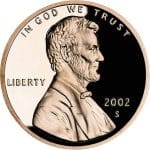A home office can be one of the best tax deductions for professionals that choose to work at home. Unfortunately, a home office tax deduction is also one of the biggest red flags for an IRS audit. To avoid tipping off the IRS audit monsters, make sure your home office follows the guidelines for a true home office.
Here are a few guidelines to follow to ensure that your home office won’t trigger an audit.
- According to the IRS, areas in your home that are used for anything that’s not business related can’t be considered home offices. This means that you can’t use your dining room table as a tax deduction. Instead, make sure that your home office is a separate room in your house that you use for business and business only. Ideally, your home office should be a completely separate room from the rest of your home. If this isn’t possible, you may be able to separate a small portion of a larger room using room dividers.
- In order for your home office to qualify for a deduction, you must use it for business more often than not. This means that you should spend more time doing business related tasks in your home office than anywhere else. For example, if you have an office at your employer’s place of business, you can only use your home office deduction if you spend over half of your business time in it.
Once you’ve determined whether or not your home office qualifies as a real home office in the eyes of the IRS, you can then start deducting your business expenses.
For example, a portion of your rent or mortgage, along with portions of your utilities and home insurance, can usually be deducted. You can’t deduct all of the money that you put into your home, however, and you must first calculate what percentage of these expenses that you can deduct.
To find out what percentage of your expenses that you can deduct, you will first need to measure the square footage of your home office as well as the square footage of your entire home. Once you have these measurements, divide the square footage of your home office by the entire square footage of your home.
Here’s an example…
- Your home office is 150 square feet, and your entire home is 1,500 square feet.
- Divide 150 by 1,500 to get 0.01.
- Multiply 0.01 by 100 to get 10%.
This means that you can deduct 10% of all home expenses. As long as they are used solely for business, you may be able to deduct other expenses as well, including internet service and phone service.
Even if you follow all of the rules and deduct only business related expenses, there’s still a chance that the IRS might audit you. While this shouldn’t be anything to really worry about if you have nothing to hide, it can be quite inconvenient and annoying.
There are a few things that you can do, however, to lower the chances of being audited.
- Don’t lie about your income. Ever. There’s really no point in trying to hide the amount of money that you make. Not only is it dishonest, but it’s the IRS that you’re trying to hide it from. They will find out.
- Back up your deductions with physical proof. This will usually mean filing a paper tax return, but also lowers the chances that the IRS will pay you a visit. Keep all of your receipts throughout the year, and include copies with your tax return.
- Include an explanation about any drastic income changes. One of the biggest red flags for an audit is an extreme change in income from one year to another. For example, if you made $200,000 last year and only made $20,000 this year, attach a note explaining the reason for this.
When not blogging about finance I also run a blog on Scalewatcher water softeners and other Green products. After all careers and human resources are the cornerstone of our fair nations economy and growth in 2012.
















